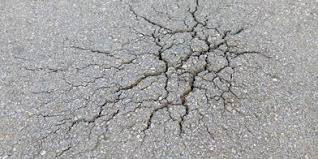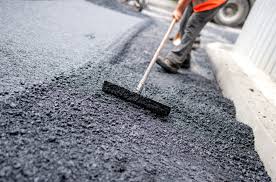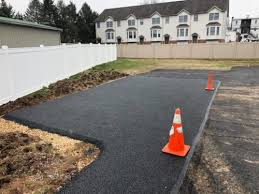Your carport is the primary thing bystanders and guests see, and it’s an imperative component in your home’s check advance. On the off chance that your garage is hollowed, recolored, split, or in any case breaking down, you’re most likely on edge to make fixes and get it back fit as a fiddle. The three principle kinds of garages—black-top, cement, and rock—all have their own attributes, and each requires various sorts of fix. When looking for Driveway Repair in Tampa fl only rely on the pros. Peruse on to find the upsides and downsides of each sort and the tips you requirement for fixing every garage’s individual issues.
RELATED: 9 Popular Driveway Options to Welcome You Home

When Repairing a Driveway Made of Asphalt…
A very much kept up black-top carport, now and again called blacktop because of its quieted dark surface, runs $2.50 to $4 per square foot for establishment and can last as long as 20 years. Overwhelming traffic, earth develop, and the utilization of substance ice-liquefy items, however, can abbreviate its valuable life, bringing about little breaks that can increment in size to all out potholes on the off chance that they not fixed quickly.
Introducing a black-top garage isn’t a DIY venture—it requires the utilization of enormous business machines that heat the hot black-top blend and overwhelming rollers that smooth it set up—yet a mortgage holder can regularly deal with the fix.
Asphalt repair in Houston is pretty similar to how it’s done here in FL. To fix a couple of little splits, all you need is a container of black-top sealant, for example, Red Devil Driveway Repair (accessible from Amazon). You administer it by means of a standard caulking weapon straightforwardly into the break to fill, seal, and stop the disintegration procedure.
On the off chance that your carport contains numerous splits, black-top fix tubing, for example, Crack-Stix (accessible from The Home Depot), might be the better decision. The flexible tubing is embedded into the splits and afterward warmed with a light to liquefy the tar, filling and fixing the break.
Various modest bug catching network splits in black-top can be helped with a mop-on black-top sealer, for example, Henry Driveway Filler and Sealer (accessible from Walmart). This item contains a black-top pitch that can be applied without heat. To keep a black-top carport fit as a fiddle, it’s a smart thought to apply this kind of filler and sealer each three to five years.
When a split structures, if it’s not expeditiously fixed, water leaks in and after some time, it can destabilize the rock fill underneath the black-top, making the black-top disintegrate away and make a pothole. Luckily, you can at present fix this issue yourself with a black-top fixing item, for example, Asphalt Patch and Pothole Filler (accessible from Amazon). This kind of item is pressed into the pothole to fill it and match the current garage.
RELATED: What’s the Difference? Solid versus Black-top Driveways
When Repairing a Driveway Made of Concrete…
Concrete is the most widely recognized sort of garage since little teams and even excited property holders with concrete-pouring experience can introduce it and fix it. Running roughly $4 to $5 per square foot for proficient establishment, concrete is one of the most grounded development materials around, and it shapes a strong, solid surface that can give you as much as 50 years of administration.
The nature of cement can differ starting with one carport then onto the next, in view of elements, for example, how well it was restored in the wake of being poured, how much water was in the solid blend (overabundance water can debilitate the material), and whether the region contains earth soil, which will in general move somewhat and split solid sections. Unattractive oil and oil stains are additionally an issue with solid carports. Here’s the means by which to handle the fixes.
In the event that your solid garage is spalling (chipping off in patches), consider reemerging with an item, for example, Quikrete Concrete Resurfacer (accessible from Lowe’s). It comes dry in a 40-pound sack and should be blended in with water and applied by bundle directions. When blended, it’s spread over a spalled area of the garage with a squeegee to fill in the harmed spots and structure another smooth surface.

For only a couple of little splits not exactly a large portion of an inch, think about fixing with a solid break filler, for example, Quikrete Advanced Polymer Concrete Crack Sealant (accessible from The Home Depot), shed a standard caulking weapon.
Breaks more extensive and more profound than a one-half inch should initially be loaded up with a froth pre-caulking bar, for example, Quikrete ¾-inch Backer Rod (accessible from The Home Depot). The froth bar is driven into the split and afterward solid break fix sealant (referenced above) is applied over it, similarly as the Quikrete group shows in their video instructional exercise on fixing splits. Without the froth pole to help it, the sealant would droop and sink away in the split.

To expel extreme oil and oil stains, utilize a ground-breaking cleaner, for example, ACT Microbial Concrete Cleaner (accessible from Amazon). Basically sprinkle the dry powder over the stain, brush it into the solid surface with an utility brush, and afterward gently spritz with water according to the guidelines. The cleaner will frame a strong bond with the surface and ought to be left on for around fourteen days to permit it to draw the whole stain out. It will normally wash away after that time, or you can scour it off with water to uncover the spotless cement underneath.